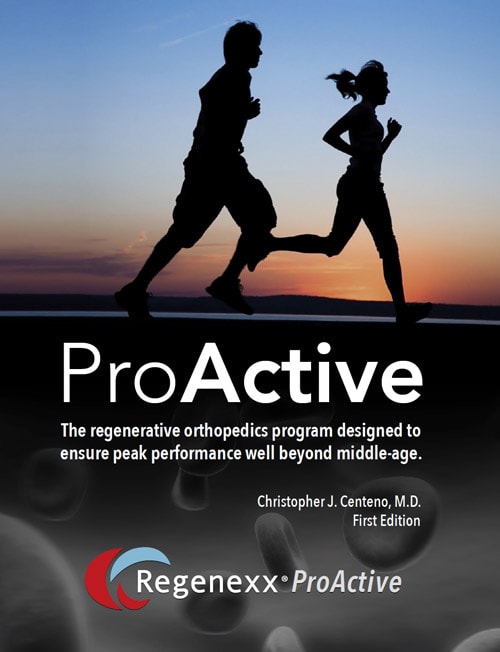Are You Too Old for Your Stem Cells to Help Cartilage Repair?
One of the big pushes behind fake stem cell therapies with dead amniotic and cord blood tissue is that they contain millions of young stem cells. While that’s a scam, can you be too old for real bone marrow stem cells to help cartilage repair? Let’s first take a look at the recent research.
What Happens to Cells as We Age?
We all get older. It’s inevitable. The grey hair sets in along with the wrinkles. Maybe we add a few extra pounds and one thing we all know happens is that we don’t recover from injuries like we did when we were young.
Aging is often a direct result of less effective cellular function, but does that mean that there’s nothing we can do as our aging bodies start to break down? Can stem cells bridge this aging cell gap and help repair injuries that normally wouldn’t heal on their own? Let’s take a look at a recent study looking specifically at the cartilage repair capabilities of older rats with and without stem cells and/or PRP.
Cartilage Repair Potential Using Stem Cells in Older Rats
The new study investigated cartilage repair in rats with partial-thickness cartilage damage. Rats were grouped in age ranges from 3 to 14 weeks and allowed to either self-heal or were treated with mesenchymal stem cells (MSCs) and/or platelet-rich plasma (PRP). Understandably, rats in the younger groups (3 weeks and 6 weeks) experienced better self-healing (nearly full restoration by 12 weeks post damage) than the older rats (with 14-week-old rats experiencing further cartilage degeneration during the same time period). However, in rats treated with stem cells with or without PRP, cartilage repair in the 14-week old rats was nearly equivalent to that in the 6-week old rats. With PRP alone, the older rats experienced nearly the same amount of cartilage repairs as the 10-week old rats.
What does this mean? Stem cells are better at repairing small potholes in the cartilage than PRP. However, PRP alone can help. All of this becomes more important as we age. Meaning that the average 20 something is likely to heal small divots in the cartilage through natural means. However, the average 30, 40, or 50-year-old needs help.
More on Stem Cells and Aging
Cartilage isn’t the only structure benefited by stem cells. A study last year found that stem cells could replenish damaged neural (nerve) cells in the hypothalamus of mice, both slowing aging and increasing lifespan. Again, similar results need to be confirmed in humans.
The mitochondria in our cells also play a key role in aging. Our stem cells naturally recharge the “batteries” of damaged or dying cells by giving them their good mitochondria. Our stem cells also accomplish this using a battery-sorting process, sorting good batteries to one cell and bad batteries to another, thereby creating one strong cell and one week instead of two mediocre cells. Why our stem cells do this is a topic for further study, but it could hold a key to using stem cells to address aging in the future.
Further, there are things you can intentionally do to naturally keep your cells healthy and slow the aging process:
- Exercise.
- Make good dietary choices.
- Take a proactive approach to addressing any health and biomechanical issues when they present themselves instead of allowing them to progress.
Speaking of being proactive, if you get a chance, read my book on how I personally try to avoid the pitfalls of aging and staying active (click on the cover to read):
The upshot? I’m now 55. While I exercise hard and try to stay fit, I know my body needs help to be able to do these things and I partake of as many orthobiologics as I can. Meaning, I get my knees injected once or twice a year with PRP. My back needs help as well as my neck and I find new things breaking down (like my shoulder) all the time. However, I won’t hesitate to get a PRP or stem cell procedure early, before things get bad and I have a complete rotator cuff tear. Am I depressed about all of this? Nope. In fact, I’m grateful that I’m aging in a time when all of this is just becoming available!

If you have questions or comments about this blog post, please email us at [email protected]
NOTE: This blog post provides general information to help the reader better understand regenerative medicine, musculoskeletal health, and related subjects. All content provided in this blog, website, or any linked materials, including text, graphics, images, patient profiles, outcomes, and information, are not intended and should not be considered or used as a substitute for medical advice, diagnosis, or treatment. Please always consult with a professional and certified healthcare provider to discuss if a treatment is right for you.
